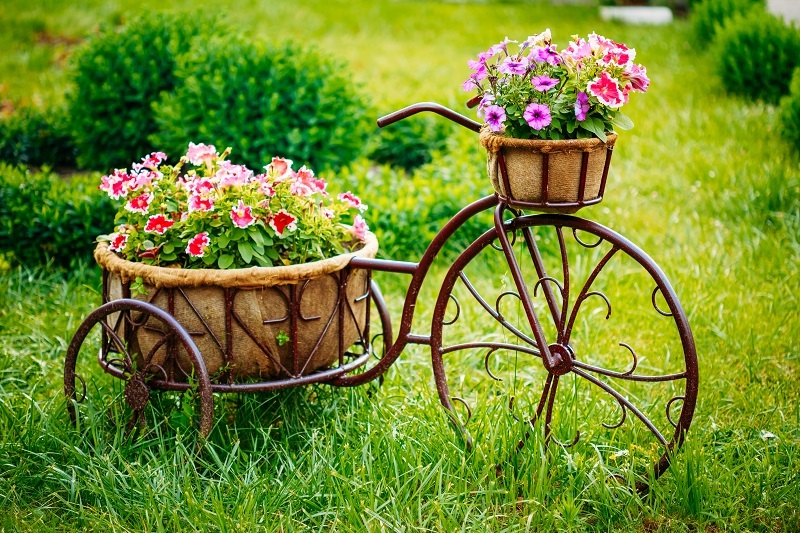Creating the Perfect Environment for Hydrangeas
Posted on 14/08/2025
Creating the Perfect Environment for Hydrangeas: A Comprehensive Guide
Hydrangeas are among the most beloved flowering shrubs in gardens across the world. With their lush blooms and vibrant foliage, hydrangeas bring timeless elegance and color to any outdoor space. But achieving those show-stopping blossoms and dense, healthy plants doesn't happen by accident. Creating the perfect environment for hydrangeas is essential for unlocking their full beauty and potential.
If you're eager to cultivate a thriving hydrangea garden, this guide will cover everything you need to know--from choosing the right location and soil to proper watering, fertilizing, pruning, and disease prevention. Follow these expert-backed tips and techniques to help your hydrangeas flourish season after season.

Understanding Hydrangea Varieties
Different hydrangea species have varying requirements and characteristics, affecting their ideal environment:
- Hydrangea macrophylla (Bigleaf): Famous for their bright blue or pink mophead or lacecap blooms.
- Hydrangea paniculata (Panicle): Known for conical, white-to-pink flowers that tolerate more sun.
- Hydrangea arborescens (Smooth): Adaptable and shade-tolerant, often with white blooms ('Annabelle' is a favorite).
- Hydrangea quercifolia (Oakleaf): Offers oak-shaped leaves and striking white or pink cone-shaped blooms.
- Hydrangea serrata (Mountain): Smaller, cold-hardy, with delicate lacecap flowers.
Identify your hydrangea species before tailoring a growing environment, as slight adjustments in care can make a significant difference.
Choosing the Perfect Planting Location
Sunlight Requirements
Sun exposure is a crucial factor in cultivating healthy hydrangeas.
- Partial sun-shade: Most hydrangea varieties flourish in dappled sunlight or morning sun followed by afternoon shade.
- Panicle hydrangeas tolerate more sun--up to six hours daily--than other types.
- Too much sun can scorch leaves; too much shade may reduce blooming.
Pro tip: East-facing beds or areas beneath tall, deciduous trees provide ideal filtered light for most hydrangeas.
Protection from Wind and Frost
Strong winds dry out and damage hydrangeas, so choose a sheltered spot. In colder climates, plant near walls or fences for frost protection.
Space for Growth
Hydrangeas need room to breathe. Check mature plant dimensions and space accordingly--typically 3-6 feet apart for good air flow, which helps minimize disease.
Soil Conditions: The Key to Thriving Hydrangeas
Soil Type
- Well-drained, loamy soil is ideal.
- Heavy clay or poorly-draining areas lead to root rot.
- Amend clay soils with compost, leaf mold, or peat moss before planting.
Soil pH and Hydrangea Color
Bigleaf hydrangeas have a unique characteristic: their bloom color changes based on soil pH.
- Acidic soils (pH below 6): Blue flowers
- Alkaline soils (pH above 7): Pink or red flowers
- Neutral soils: Purple or mixed shades
Test your soil pH and adjust as desired.
- To make soil more acidic: Add aluminum sulfate or organic matter like pine needles and coffee grounds.
- To make soil more alkaline: Add lime.
These amendments should be applied several months before peak bloom for noticeable color changes.
Planting Hydrangeas for Success
- Dig a hole twice as wide and as deep as the root ball.
- Mix compost into excavated soil to improve drainage and nutrition.
- Place the hydrangea so the top of the root ball is level with the ground.
- Backfill and water deeply to eliminate air pockets.
- Mulch with 2-3 inches of bark, pine needles, or compost to retain moisture and regulate temperature.
Do not bury stems too deeply. Root rot and poor establishment can result from excess soil around the crown.
Watering: Keeping Hydrangeas Hydrated
Consistent moisture is vital, especially during blooming and hot weather.
- Young plants: Water 2-3 times per week during the first year.
- Established hydrangeas: 1 inch of water per week (more in droughts or sandy soils).
- Morning watering is best to allow foliage to dry by nightfall, reducing fungal risk.
- Soaker hoses or drip irrigation target root zones and conserve water.
- Avoid overhead watering, which encourages fungal diseases.
Mulching prevents quick moisture loss and keeps roots evenly moist.
Fertilization: Feeding Your Hydrangeas
Well-fed hydrangeas grow stronger and bloom better, but excess fertilizer can damage plants.
Best Fertilizers for Hydrangeas
- A balanced slow-release fertilizer (10-10-10 or 12-4-8) in early spring as new growth appears
- Acid-loving plant fertilizer for blue blooms
- Compost or well-rotted manure for organic feeding
Avoid high-nitrogen fertilizers, which encourage leaf growth but reduce blooming.
When and How to Fertilize
- Apply one to two feedings per season--once in early spring and, if necessary, one after flowering in midsummer.
- Always water after application to avoid root burn.
Pruning: Tips for Lush, Abundant Blooms
Hydrangeas have different pruning needs based on their species. Improper pruning can reduce flowering for a year or more.
Pruning Guidelines by Type
- Bigleaf & Oakleaf Hydrangeas: Bloom on old wood; prune right after flowering in summer. Remove spent blooms and weak stems.
- Panicle & Smooth Hydrangeas: Bloom on new wood; prune in late winter or early spring. Cut back by up to one-third for size or shape.
Regular pruning encourages air flow and removes dead or diseased branches.
Protecting Hydrangeas from Pests and Disease
Common Problems
- Leaf spots (fungal): Appears as brown or black spots; improve air circulation and avoid wetting foliage.
- Powdery mildew: White powdery layer; prune to increase air flow and use fungicides if needed.
- Aphids, spider mites, scale insects: Rinse with water spray or apply insecticidal soap.
Mulch also helps prevent soil-borne pathogens from splashing on lower leaves.
Winter Care: Protecting Your Hydrangeas
- In cold climates, apply thick mulch around the base before freeze-up.
- For young or tender varieties: Cover with burlap or frost cloths during extreme cold snaps.
- Do not prune in fall--wait until spring or after blooming for your species.
Winter protection is crucial for bigleaf and mountain hydrangeas to preserve flower buds for the next year.
Achieving Spectacular Blooms: Additional Tips
- Deadhead spent blooms to encourage more flowers and a tidy appearance.
- Rotate potted hydrangeas for even sunlight exposure.
- Use rainfall as primary watering source where possible--rain collects fewer minerals, reducing leaf spotting.
- Group different hydrangea cultivars for varied color and form.
- Companion plant with hostas or ferns for contrast and extra shade protection.
Soil testing: Conduct a basic soil test every 2-3 years. Repeat pH and nutrient amendments as needed for optimal hydrangea environment.

Frequently Asked Questions About Hydrangea Care
How can I make hydrangea flowers blue or pink?
Soil pH is the main factor. For blue blooms, lower the pH with sulfur or aluminum sulfate; for pink, raise pH with lime. Regular maintenance is required for lasting results.
Why are my hydrangeas not blooming?
- Incorrect pruning (cutting off flower buds)
- Too much shade or, occasionally, too much sun
- Poor soil or lack of nutrients
- Winter bud damage in colder regions
Adjust these factors to encourage blooms.
Can hydrangeas grow in pots?
Yes. Use large containers, quality potting mix, and ensure proper drainage. Hydrangeas in pots may need more frequent watering and protection from extreme temperatures.
Conclusion: Set the Stage for Hydrangea Success
Creating the perfect environment for hydrangeas requires attention to location, soil quality, hydration, nutrition, and protection. By providing the right balance of sunlight, moisture, and nutrients, and protecting against harsh elements and pathogens, you'll be rewarded with lush foliage and magnificent blooms year after year. Hydrangeas are adaptable, resilient, and ready to thrive when given proper care. Put these proven practices into action, and transform your garden with the vibrant, show-stopping beauty of healthy hydrangeas!
For more expert gardening advice on hydrangeas and other landscaping plants, subscribe to our newsletter or browse our latest articles!
Latest Posts
Every birth flower tells a tale, uncover what yours conveys about you
Creating the Perfect Environment for Hydrangeas
Red Roses: The Language of Love on Valentine's Day







